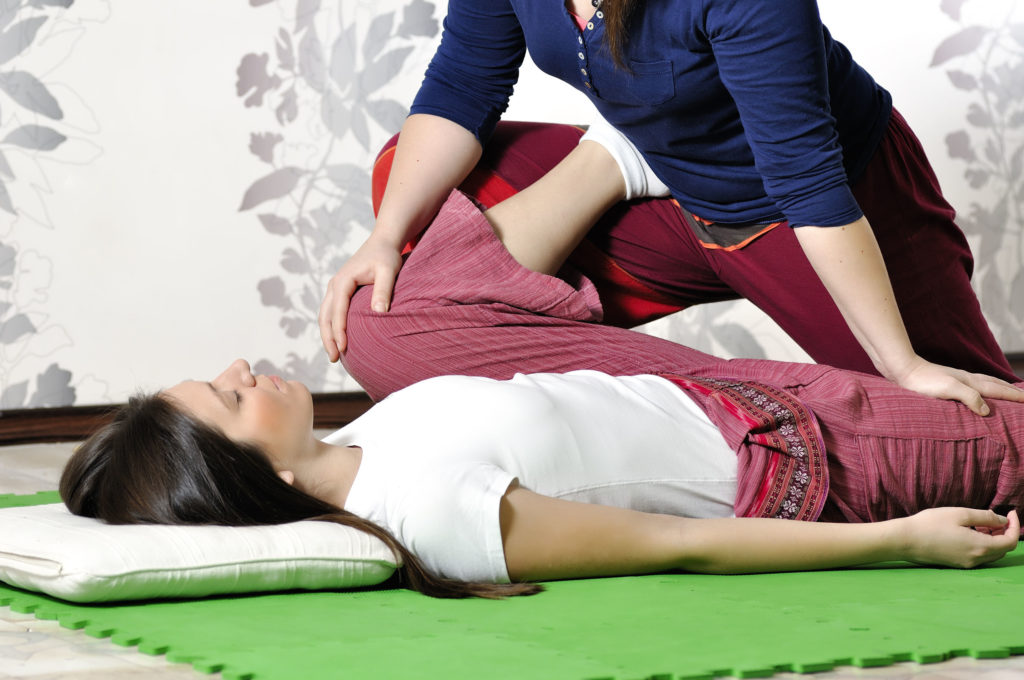What is Thai Massage
Origin of Thai Massage dates all the way back to over 2,500 years ago. The history of nuad boran, or “ancient healing touch,” is older than Thailand, dating back to ancient India, Ayurvedic medicine, and the origins of Buddhism. Ayurveda, the ancient Indian “science of life,” teaches that our bodies possess unique combinations of the three doshas(life energies) which need to be in balance. The path to harmony lies in herbs, nutrition, spiritual meditation, and a special form of massage that focuses on the body’s energy pathways, or sensin Thai. The sens lines are an important key during the massage, where therapists are trained to remain in flow during session to balance these energy lines for the client.
Thai massage uses gentle pressure and stretching techniques to relax the whole body. Different from a regular table massage, there is still constant body contact between the therapist and the client. The client will actively participate in the massage with assisted yoga stretching and remain fully clothed during the session (loose comfortable clothing is recommended), no lotion or oils are used. Instead of a regular massage that consists of kneading and focusing on specific muscle groups, the body is compressed, pulled, stretched and rocked. The client will lay on the floor with a cushioned thai mat underneath them. During the massage, the client may lay face up, face down, and at times on their side all while being assisted. The therapist may use hands, feet, knees, and even gently walk on the client. Similar to other forms of massage therapy, the benefits of Thai massage for clients can include relaxation, increased mobility, as well as relief from the pain associated with many chronic conditions.





